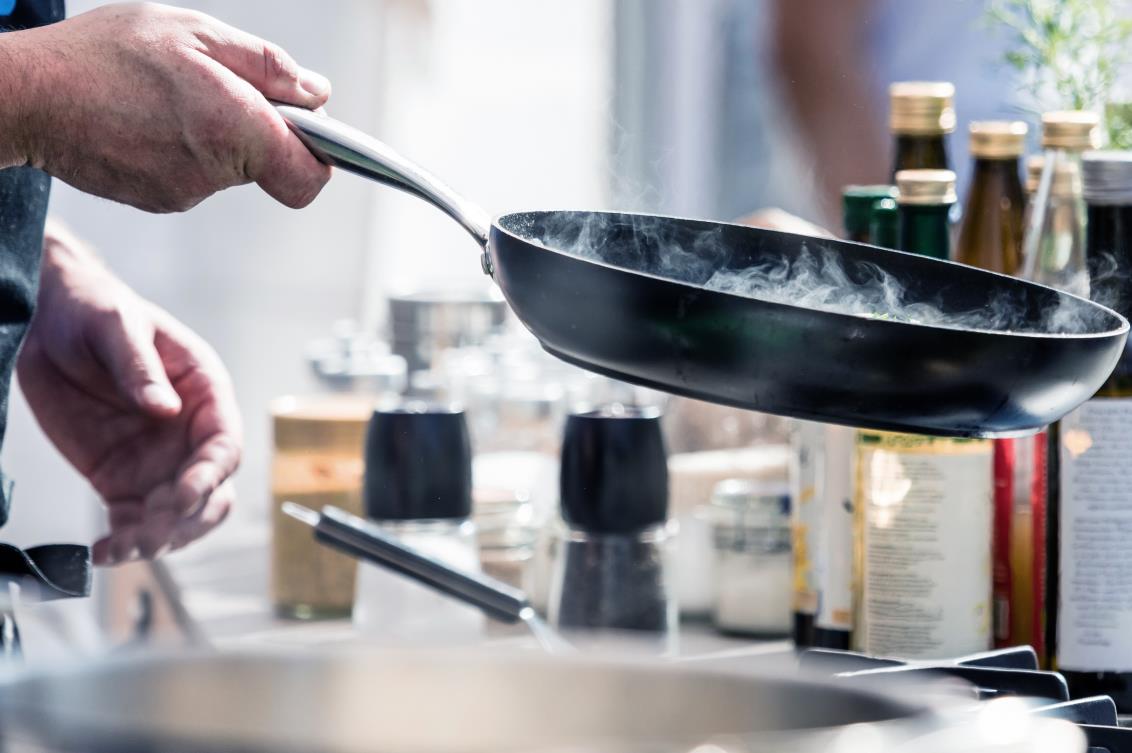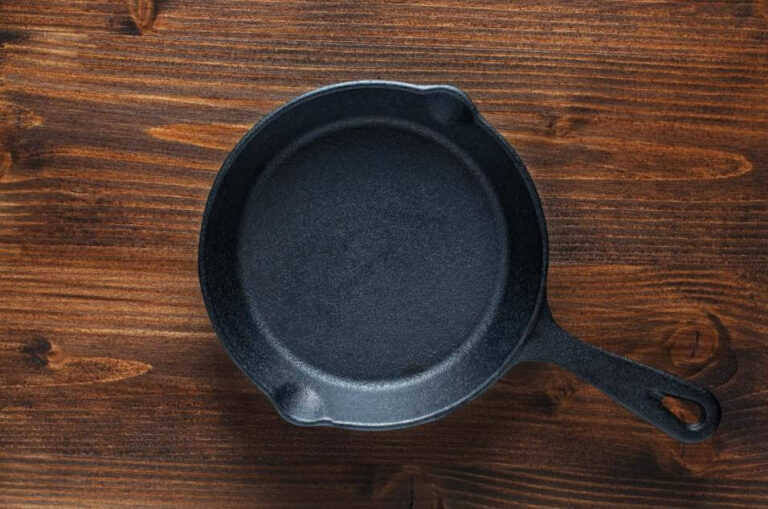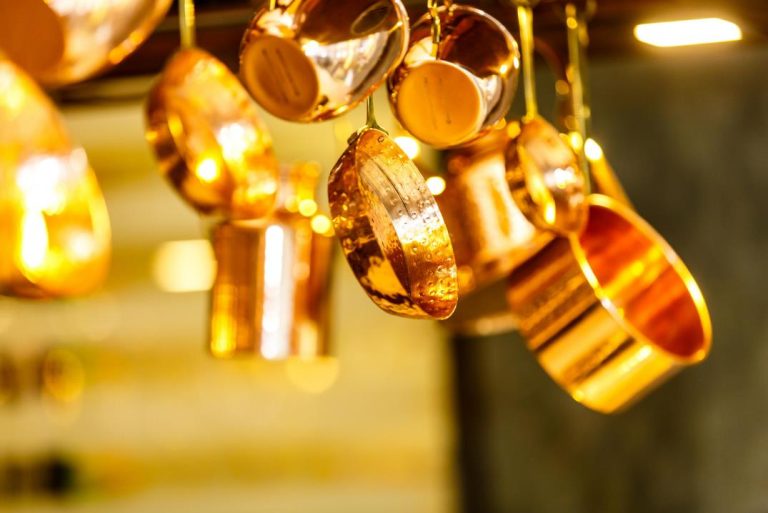Non-stick cookware is the favorite of home cooks and professionals alike. Any cook getting their hands on a non-stick pan from using cast iron skillets daily would find them magical. Even with little to no oil, non-stick cookware simply doesn’t stick to foods.
Cooks using non-stick cookware can flip eggs effortlessly and slide anything off the pan while sizzling hot. These pots and pans aren’t only convenient when cooking but also when it comes to cleaning. It only takes a few minutes and gentle scrubbing with a standard sponge. It doesn’t need soaking or another special treatment to make it clean.
The benefits of non-stick cookware go on and on. However, there’s a common belief that non-stick coatings aren’t safe. If you prefer using non-stick pots and pans but worry that it may affect the health of your and your customers, this article is for you. Read on to discover if non-stick cookware is safe and tips on how to use one correctly.
A brief history of non-stick coatings
The original non-stick cookware is seasoned cast iron. They provided a non-stick cooking surface without additional chemicals for centuries. While many cooks held them dear to their hearts, PTFE (Polytetrafluoroethylene) non-stick coatings came around during the mid-1900s, invented by a chemist at DuPont (Teflon), Dr. Roy Plunkett.
By the 1970s, Teflon-coated pans and pots dominated the market, making cast iron skillets almost obsolete for the average cook.
However, the PTFE back then used PFOA, perfluorooctanoic acid, during manufacturing. This chemical was scrutinized in the coming years for raising health and environmental concerns due to not breaking down naturally and contaminating drinking water and soil.
Various studies linked PFOA to cancer. In 2005, DuPont faced a major lawsuit related to PFOA and settled to pay $16 million. Since 2015, the law required Teflon to produce PTFE without PFOA, and the entire cookware industry shifted towards PFOA-free manufacturing processes. Today, most non-stick cookware in the market remains PFOA-free.
Problems with the old non-stick cookware
The health concern with the early non-stick cookware was PFOA. Exposure to this chemical has been linked to various adverse health effects. Some of them include cancer, thyroid disease, weakened immune system function, and reproductive problems.
Additionally, PFOA doesn’t break down naturally in the environment. Even in the human body, it can take years to flush out. That said, the problem with the old non-stick cookware is it used PFOA during the manufacturing process. Since non-stick cookware today doesn’t have PFOA anymore, there aren’t any concerning health effects.
Even though non-stick cookware nowadays doesn’t use this harmful chemical, PFOA has various other applications. For example, you can find it in water-resistant fabrics to popcorn bags.
Types of non-stick cookware coating today
Non-stick cookware comes in various types. Although most use PTFE, others have enamel and ceramic coating.
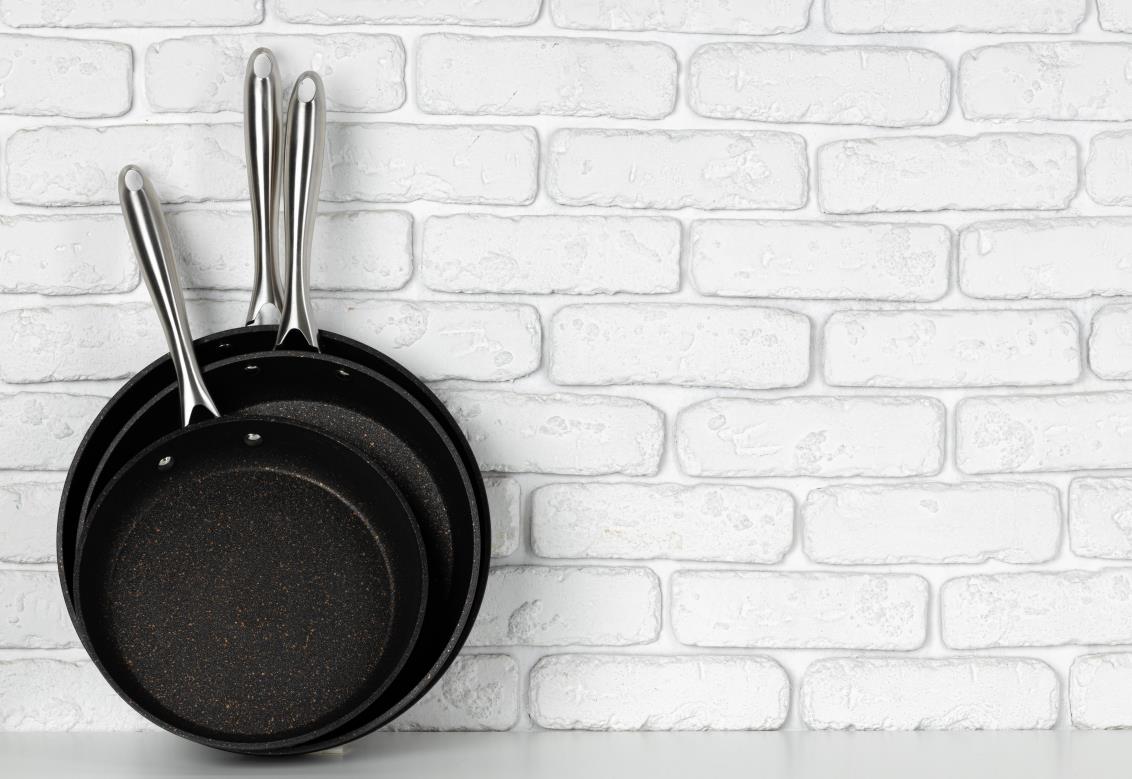
PTFE is a synthetic fluoropolymer. It’s one of the PFAS chemicals like the other Per- and poly-fluoroalkyl substances with various applications. The most popular brand name for it is Teflon. This coating is incredibly non-reactive and doesn’t dissolve other chemicals. These are what provide the coated metal with non-stick properties.
Enamel coating is similar. It is essentially powdered glass fused at high temperatures onto metal, usually cast iron. The colorful enameled cast iron Dutch ovens all use enamel coating.
However, this type of non-stick coating isn’t as effective as PTFE. It has more to do with preventing cast iron from reacting with the environment to prevent rust and make it more convenient to use.
Ceramic is fairly new to the market – or at least it hasn’t been around for as long as Teflon-coated pans and enameled cast iron Dutch ovens. Despite its name, it isn’t clay-based ceramic as one would expect in these non-stick pots and pans. Ceramic cookware uses a silicone-based coating that gives it a glossy appearance.
Buy Wholesale Cookware and Start Scaling up with Us Today
Contact us and connect with a sales rep to get a free quote.
How safe is non-stick cookware now?
Fast forward to today, it’s very unlikely that you will find a non-stick pan that has PFOA. Regulatory bodies across the globe are very strict about this. There are also nonprofit organizations like the Environmental Working Group that research toxic chemicals in everyday products.
Besides, manufacturing chemical compounds like PTFE is beyond the capability of most cookware manufacturers. From small-scale to large cookware manufacturers, they purchase PTFE from companies like Teflon and 3M. So there isn’t a way for manufacturers to cheat the process and use PFOA.
The metal core used for making these pots and pans usually uses aluminum, as it’s a good conductor of heat and doesn’t rust. There is also non-stick cookware made with multiple layers. Similar to tri-ply stainless steel cookware, these often use a mix of aluminum and stainless steel layers, though some also contain copper.
Since these metals are resistant to corrosion and oxidation, an exposed cooking surface due to scratching doesn’t cause health risks. Nonetheless, it’s best to replace non-stick pans with deep scratches.
With all this, you can be sure that PFOA-free non-stick cookware is safe to use. However, this doesn’t mean that all non-stick cookware remains safe no matter how you use it. Non-stick cookware can still be dangerous if used incorrectly.
Can PTFE cause health problems?
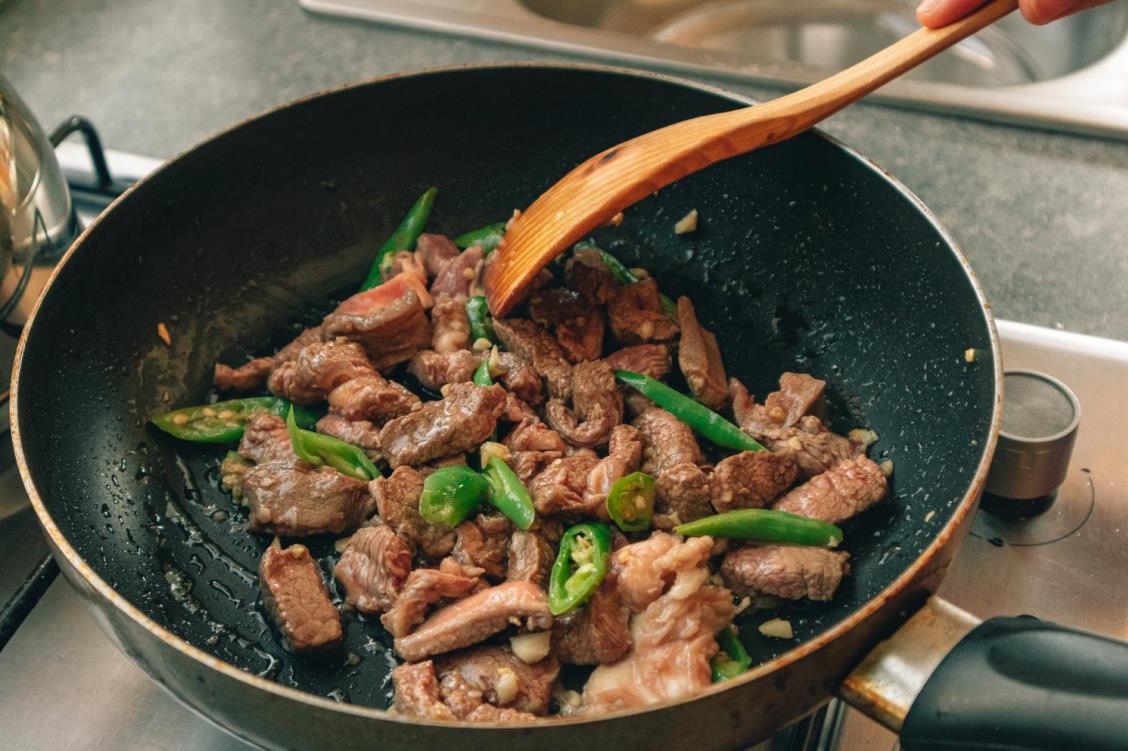
PTFE is linked to polymer fume fever, which results in flu-like symptoms that cause chest pain, shortness of breath, and dizziness. When PTFE is heated to high temperatures, over 500ºF, to be more specific, it begins to release toxic fumes.
It would take about four to five minutes for a non-stick pan to reach this temperature over medium heat.
The fumes released from the surface of the pan can lead to polymer fume fever, but only in high concentrations. So unless you bring your face into an empty non-stick pan and inhale the smoke, it won’t cause health issues. Even then, the fumes one pan produces over a duration of a few minutes won’t be enough to cause any symptoms.
About 1,500 polymer fume fever cases occur annually in the US.
Most of these cases are factory workers, not cooks that use non-stick cookware. So using non-stick cookware is entirely safe, given that the temperature doesn’t exceed 500ºF. This applies to all heat sources, whether the pan is over the stovetop or in the oven.
Still, it’s best to avoid heating non-stick cookware and bakeware empty for prolonged periods at high temperatures. This not only prevents producing hazardous smoke but also makes the cookware last longer, as high temperatures can degrade the coating.
Non-stick cookware performance
Non-stick cookware separates itself from others with its convenient nature. The food simply doesn’t stick, even if you skip the oil altogether. You can scramble a few eggs without oil and wipe the pan clean.
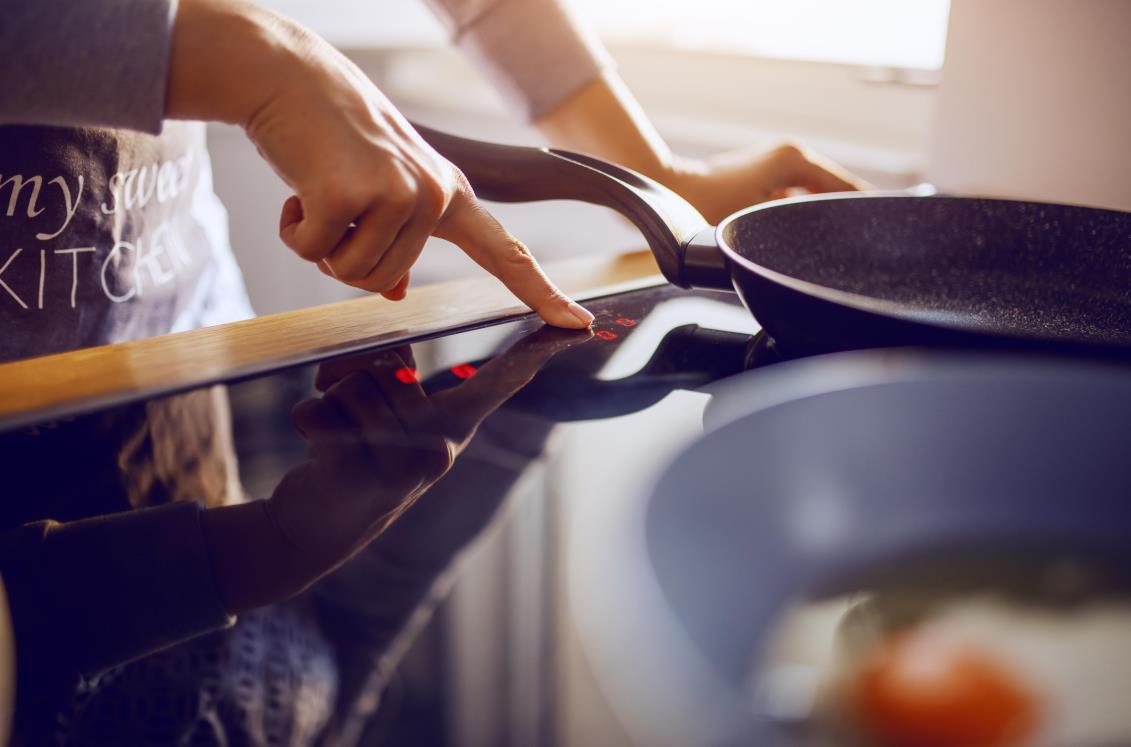
It doesn’t end there. After cooking, non-stick cookware takes only a few minutes to clean. You can make it ready for the following use with a few scrubs and a quick rinse. It doesn’t need soaking or drying and seasoning before storing. The convenience of using non-stick cookware makes cooks reluctant to let them go.
While non-stick cookware is easy to use to the point of being effortless, others can provide just as good value. Here are a few close options to Teflon-coated non-stick pots and pans.
- Stainless steel: By standard, stainless steel cookware isn’t non-stick. Using it correctly can provide cooks with a non-stick cooking surface, though. Over medium-high heat, preheat the cookware and sprinkle a few drops of water to test how it reacts. If the water forms into droplets and glides across the surface, it’s hot enough and won’t stick. If it evaporates instantly, it isn’t hot enough yet.
- Enameled cast iron: The enamel coating isn’t non-stick like PTFE or silicone-based coatings. Still, they can be equally convenient. With a tiny drop of oil, food sticking won’t be an issue. The downside to enameled cast iron is the weight and price. They are much heavier and costlier than non-stick.
- Anodized aluminum: Unlike typical aluminum cookware, anodized aluminum doesn’t react with foods. This non-reactivity enables it to have a partially non-stick cooking surface. Although anodized aluminum isn’t as non-stick as PTFE or ceramic, cooks can use it with minimal oil for a similar cooking experience.
- Seasoned cast iron and carbon steel: These aren’t non-stick like the others, but they can be with some effort and care. Cooks enjoy this semi-non-stick surface with cast iron’s heat retention to braise foods and sear meat. Carbon steel conducts heat excellently, perfect for sauteing and frying. Although cast iron and carbon steel will require maintenance, they provide a wonderful cooking experience once you get accustomed to the routine.
Buy Wholesale Cookware and Start Scaling up with Us Today
Contact us and connect with a sales rep to get a free quote.
Should you sell non-stick cookware?
Non-stick cookware is a must for any store selling kitchen products. A large portion of customers that walk into your store or browse products from your online shop will specifically look for non-stick.
Non-stick dominates the cookware market, and you would miss a lot if you skipped selling non-stick cookware.
Most cooks replace their non-stick cookware every few years. You can build a steady customer base by selling high-quality products that satisfy users. Consider having a few cookware sets and individual pieces of pots and pans to appeal to different potential buyers.
Source high-quality cookware from LeeKnives
LeeKnives is one of the leading knife manufacturers in China. We don’t manufacture cookware products, but we know most of our clients sell a variety of kitchen products. While we manufacture high-quality knives and knife supplies, our connections in the industry can supply you with the best cookware products from China.
The best part is you won’t need to deal with multiple agents. Contact us with your cookware and knife inquiries to request a free quote.
